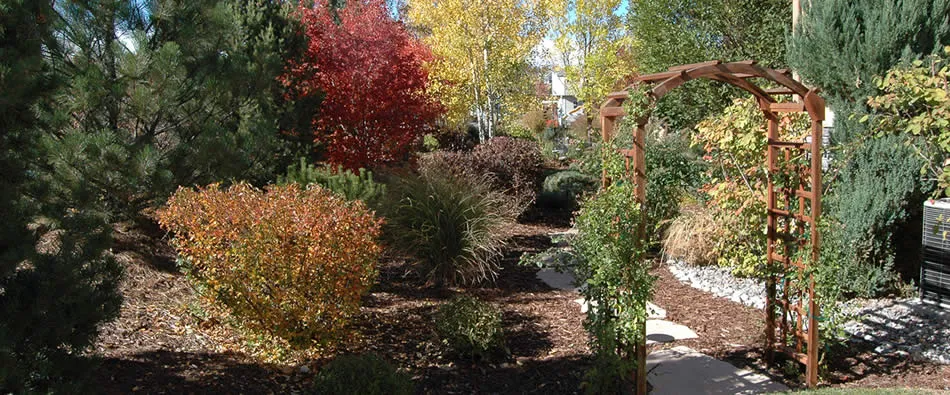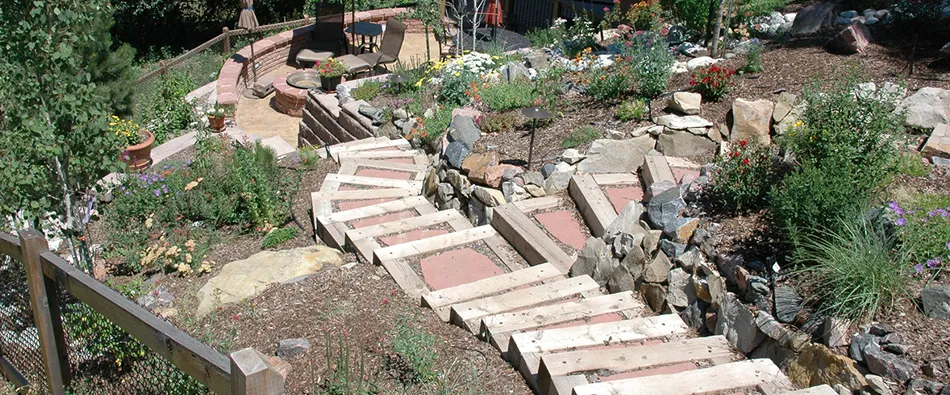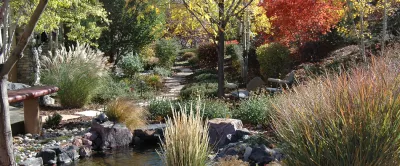Fertilization for your Fall Lawn
Fall is the best time of year to fertilize Colorado's bluegrass lawns. Promotions about "lawn winterization" may sound mysterious, but there's nothing magical about it. Simply fertilize with nitrogen sometime during late September to early November at lower altitudes, and earlier in the mountains. The benefits of fall fertilizing include a healthier turf before winter, a healthier root system, and stimulating a turf that greens up earlier in the spring without excessive top growth. Fall fertilization produces dense, green spring lawns without the mowing chores that come with spring fertilization. It should be a part of every good lawn care program.
Follow the application instructions on the fertilizer carefully and remember that turf must be green when nitrogen is applied. Also, make sure that the Fall lawn fertilization soil is moist so the nitrogen will dissolve easily. If not, irrigate and wait a day before fertilizing. Fertilizer applied to very dry, cold soil or to dormant turf won't be used efficiently.
While nitrogen is the most important nutrient, there is no harm if fertilizers also contain some phosphorous or potassium.
------------------------------------------------------------------
Phosphates are a major source of pollution in lakes and streams, and result in over-production of algae and water weeds. However, many of us have misconceptions regarding the source of polluting phosphates, and many homeowners unknowingly contribute to the problem.
Lawn and garden fertilizers often are implicated as the major source of phosphate pollution. However, research clearly demonstrates that with proper application, fertilizer does not pollute. When phosphates are applied to soils, they quickly bind to soil particles, much like a magnet picks up paper clips. Soil-bound phosphates contribute to pollution only when soil erosion occurs. Research studies found little or no difference in the phosphate content of storm runoff from lawn fertilizers with and without phosphate.
Problems arise, however, when fertilizer is over-spread or spilled onto hard surfaces like streets, driveways and sidewalks. Here, the phosphate washes with rain through the storm drains into lakes and rivers.
Likewise, grass clippings and leaves that fall on hard surfaces release their phosphorous into water sources. Research studies indicate that 80 percent of the phosphorous from urban settings comes from lawn clippings and leaves that end up in street gutters. While a few grass clippings mowed into the street look rather innocent, collectively they have a major impact on our water quality. Using a mulching lawn mower to keep lawn clippings on your lawn is especially useful.
Another important source of phosphate pollution comes from soil erosion caused by water or wind. When soil moves, it takes the soil-bound phosphates with it. Construction sites and sparsely vegetated ground are common causes of erosion.
You can take an active part in protecting Colorado's water quality by keeping fertilizers, leaves and grass clippings off streets and driveways. Prevent soil erosion by planting slopes with grass or other plants. We all have a part in protecting our water, one of Colorado's most valuable resources!
------------------------------------------------------------------------
Fertilization
Nitrogen is the most important nutrient for promoting good turf color and growth. Do not overstimulate the turf with excess N, especially during the spring and summer.
Overfertilization can contribute to thatch buildup and increased mowing requirements. Avoid underfertilization of bluegrass and ryegrass. These species can become unhealthy if not fertilized properly. Turf that does not respond to nitrogen fertilizer may be lacking in other nutrients, such as phosphorus or iron. Get the soil tested to determine which nutrient(s) are deficient.
Balanced or complete fertilizers contain various amounts of phosphorus, potassium, iron and sulfur. They are a good safeguard against a potential nutrient deficiency. If you leave clippings on the lawn, these nutrients are recycled from the clippings. If you remove clippings, this type of fertilizer is appropriate.
References from the Colorado extensions program






